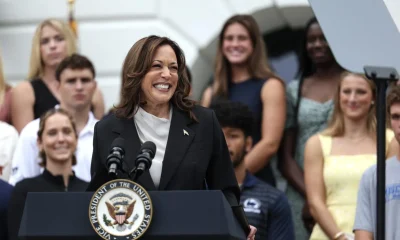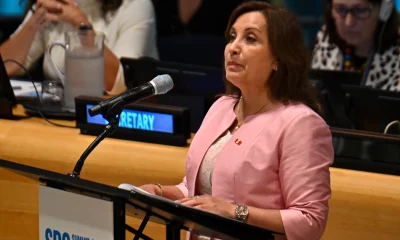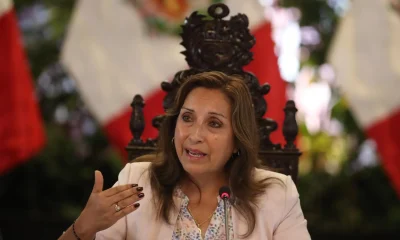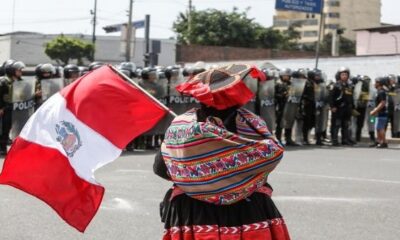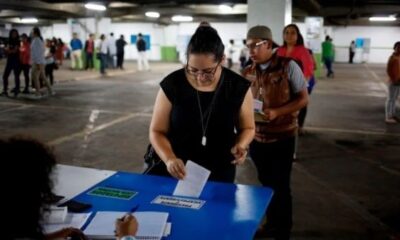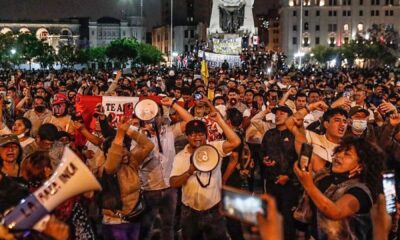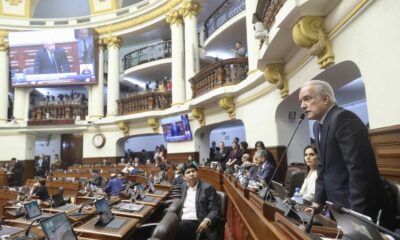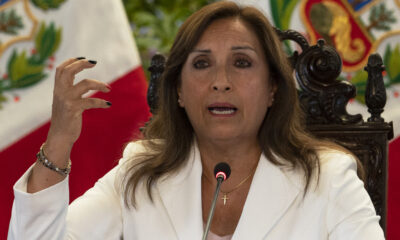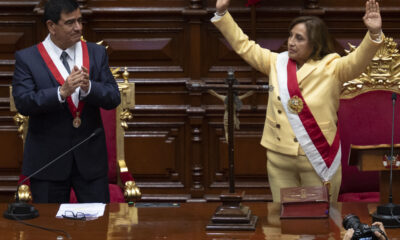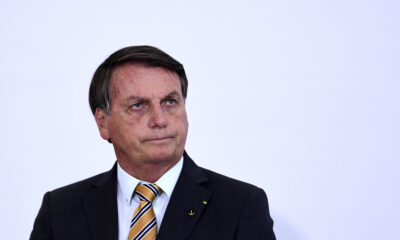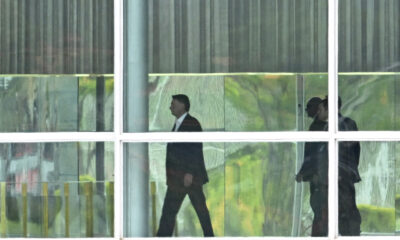International
Peru Congress rejects snap election, president asks to try again
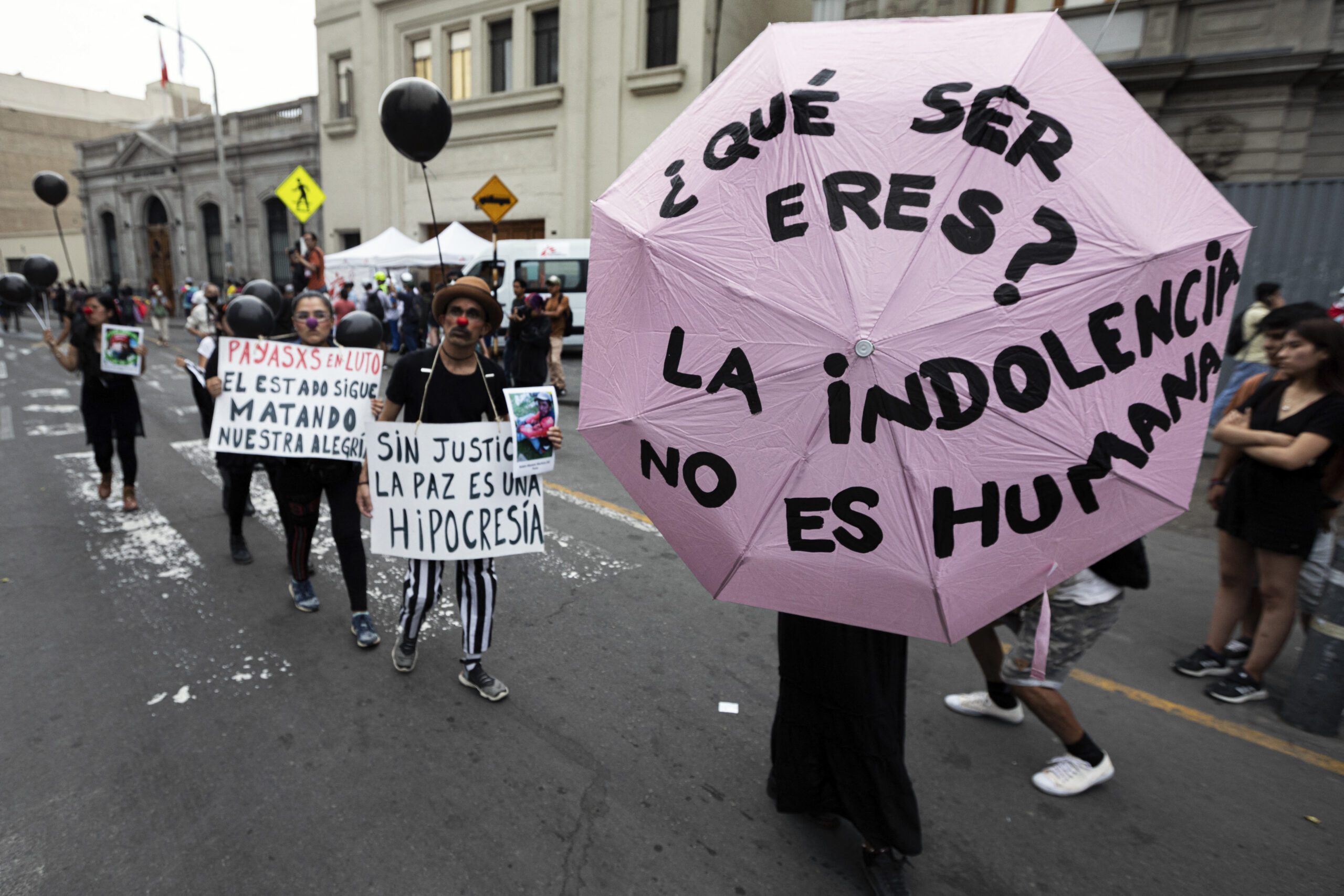
January 29 | By AFP | Paula Bustamante |
Peru’s embattled president Dina Boluarte on Saturday urged lawmakers to find a way out of a deepening political crisis by agreeing to snap elections in December, just hours after Congress voted against the idea.
In the early hours of Saturday, lawmakers had rejected her request to move elections forward to December, even as anti-Boluarte protests raging across the country have left dozens dead.
“We regret that the Congress of the Republic has been unable to define the date of general elections where Peruvians can freely and democratically elect the new authorities,” Boluarte said on Twitter Saturday.
She urged politicians to “put down their partisan interests and place the interests of Peru above them.”
The South American country has been embroiled in a political crisis with near-daily protests since December 7, when former president Pedro Castillo was arrested after attempting to dissolve Congress and rule by decree.
Demanding that Boluarte resign and call fresh elections, Castillo supporters have blocked highways, causing shortages of food, fuel and other basic supplies. The government said it will soon deploy police and soldiers to clear the roadblocks.
No interest in ‘clinging to power’
Lawmakers had agreed last month to bring forward elections from 2026 to April 2024.
But in the face of relentless protests, Boluarte on Friday urged Congress to move the vote up further, to December.
However, at a plenary session that ended early Saturday, Congress rejected the proposal, with 45 votes in favor, 65 against and two abstentions.
Demonstrators are calling for immediate elections, as well as Boluarte’s removal, the dissolution of Congress and a new constitution.
“Nobody has any interest in clinging to power,” Boluarte insisted on Friday. “If I am here it is because I fulfilled my constitutional responsibility.”
As Castillo’s vice president, Boluarte was constitutionally mandated to replace him after he was impeached by Congress and arrested.
The US State Department on Friday urged dialogue and restraint by all parties.
‘Everything is very expensive’
In seven weeks of demonstrations, 47 people have been killed in clashes between security forces and protesters, according to the Ombudsman’s Office of Peru.
The autonomous human rights office said an additional 10 civilians, including two babies, died when they were unable to get medical treatment or medicine due to roadblocks.
In southern regions, roadblocks have resulted in widespread shortages.
Some of the worst violence and highest death tolls have come when protesters tried to storm airports in the south.
Southern regions with large Indigenous populations have been the epicenter of the protest movement that has affected Peru’s vital tourism industry.
As well as blocking dozens of roads and forcing the temporary closure of several airports, protesters have placed rocks on the train tracks that act as the only transport access to Machu Picchu, the former Inca citadel and jewel of Peruvian tourism.
Hundreds of tourists were stranded at the archeological ruins, with many eventually evacuated by helicopter.
International
Police investigate deaths of Rob Reiner and wife as apparent homicide

The Los Angeles Police Department (LAPD) is investigating the deaths of Hollywood actor and filmmaker Rob Reinerand his wife as an “apparent homicide,” amid a wave of tributes to the director of classics such as When Harry Met Sally.
According to U.S. media reports on Sunday, Rob Reiner and Michele Singer Reiner were found dead at their Los Angeles mansion with what appeared to be stab wounds.
Several political figures shared messages of condolence following the reported deaths of the director of A Few Good Menand his wife.
While the LAPD did not officially confirm the identities of the victims, it stated that homicide detectives were dispatched to the Reiner residence.
“At this time, no additional details are available and the investigation into an apparent homicide is ongoing,” the Los Angeles Police Department said in a statement posted on social media.
LAPD Deputy Chief Alan Hamilton told reporters that no arrests have been made and that no individuals are currently being questioned as suspects.
“I’m not going to confirm whether anyone is being questioned at this moment or not. We are going to try to speak with as many family members as we can,” Hamilton said.
CNN reported that a family spokesperson confirmed the deaths of Reiner and his wife.
California Governor Gavin Newsom, former U.S. President Barack Obama, and former Vice President Kamala Harrisissued statements expressing their condolences.
International
U.S. and Mexico Reach Deal to Address Water Deficit Under 1944 Treaty

The United States and Mexico have reached an agreement to comply with current water obligations affecting U.S. farmers and ranchers and for Mexico to cover its water deficit to Texas under the 1944 Water Treaty, the U.S. Department of Agriculture said in a statement.
The department уточified that the agreement applies to both the current cycle and the water deficit from the previous cycle.
On Monday, U.S. President Donald Trump accused Mexico of failing to comply with the water-sharing treaty between the two countries, which requires the United States to deliver 1.85 billion cubic meters of water from the Colorado River, while Mexico must supply 432 million cubic meters from the Rio Grande.
Mexico is behind on its commitments. According to Washington, the country has accumulated a deficit of more than one billion cubic meters of water over the past five years.
“This violation is severely harming our beautiful crops and our livestock in Texas,” Trump wrote on Monday.
The Department of Agriculture said on Friday that Mexico had agreed to supply 250 million cubic meters of water starting next week and to work toward closing the shortfall.
Agriculture Secretary Brooke Rollins, quoted in the statement, said Mexico delivered more water in a single year than it had over the previous four years combined.
Trump has said that if Mexico continues to fall short of its obligations, the United States reserves the right to impose 5% tariffs on imported Mexican products.
Mexico’s Deputy Foreign Minister for North America, Roberto Velasco, said that a severe drought in 2022 and 2023prevented the country from meeting its commitments.
International
Several people shot in attack on Brown University campus

Several people were shot on Saturday in an attack on the campus of Brown University, in the northeastern United States, local police reported.
“Shelter in place and avoid the area until further notice,” the Providence Police Department urged in a post on X. Brown University is located in Providence, the capital of the state of Rhode Island.
U.S. President Donald Trump said on his social media platform Truth Social that he had been briefed on the situation and that the FBI was on the scene.
At 5:52 p.m. local time (11:52 p.m. GMT), Brown University said the situation was still “ongoing” and instructed students to remain sheltered until further notice.
After initially stating that the suspect had been taken into custody, Trump later posted a second message clarifying that local police had walked back that information. “The suspect has NOT been apprehended,” the U.S. president said.
-

 International5 days ago
International5 days agoWashington declares State of Emergency as atmospheric river brings severe flooding
-

 International5 days ago
International5 days agoU.S. to require five-year social media history from tourists under Visa Waiver Program
-

 Central America4 days ago
Central America4 days agoHonduras election crisis deepens as CNE president denounces intimidation attempts
-

 Central America5 days ago
Central America5 days agoOAS and EU urge honduran political actors to respect vote results and avoid unrest
-

 International4 days ago
International4 days agoCuba battles out-of-control dengue and chikungunya epidemic as death toll rises to 44
-

 International4 days ago
International4 days agoColombia says it would not reject Maduro asylum request as regional tensions escalate
-

 International2 days ago
International2 days agoSeveral people shot in attack on Brown University campus
-

 International13 hours ago
International13 hours agoPolice investigate deaths of Rob Reiner and wife as apparent homicide
-

 International4 days ago
International4 days agoEcuador on track for record violence as homicides hit highest level in Latin America again
-

 Central America1 day ago
Central America1 day agoPanama seizes over three tons of drugs hidden in Caribbean port container
-

 International5 days ago
International5 days agoSix ecuadorian soldiers jailed pending trial for alleged extrajudicial execution
-

 Central America13 hours ago
Central America13 hours agoOAS urges swift recount in Honduras as election results remain uncertain
-

 International2 days ago
International2 days agoU.S. and Mexico Reach Deal to Address Water Deficit Under 1944 Treaty

























